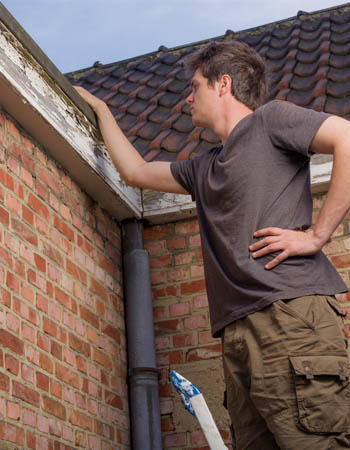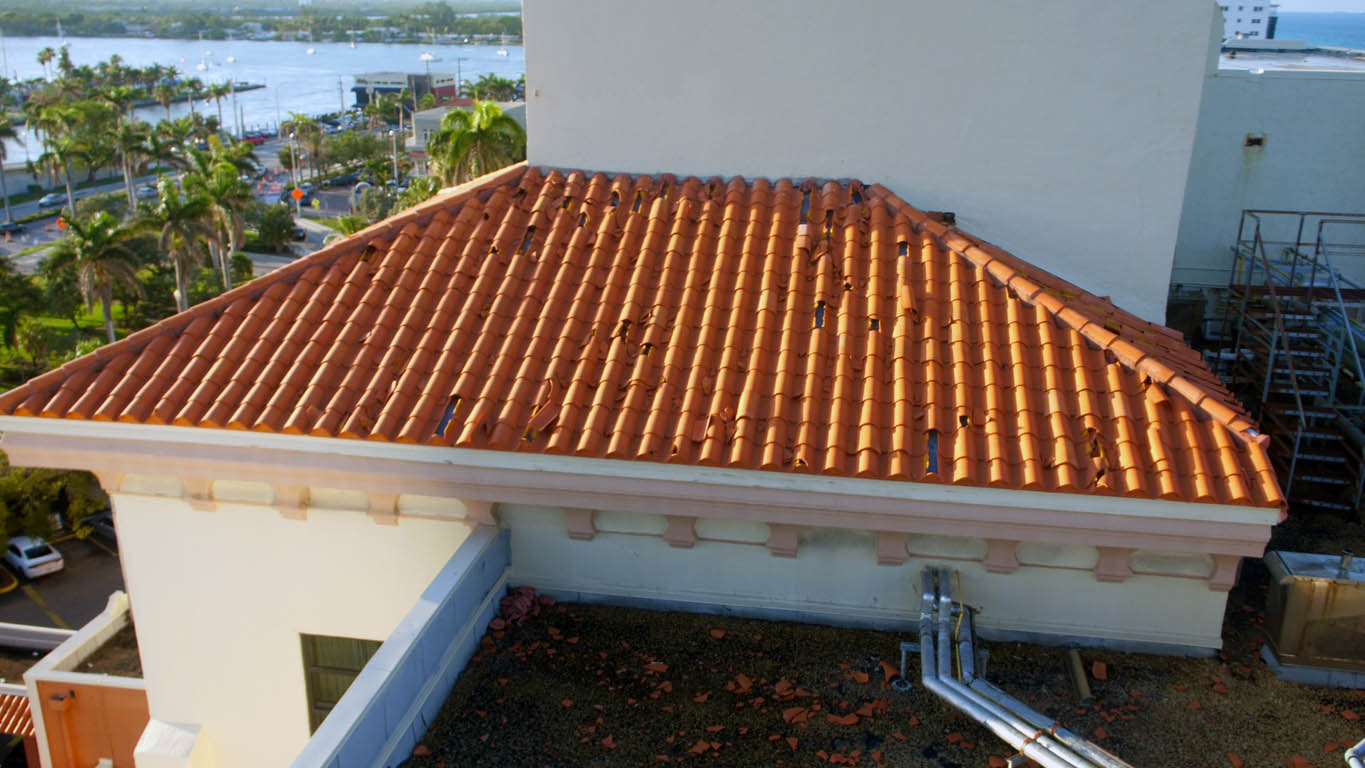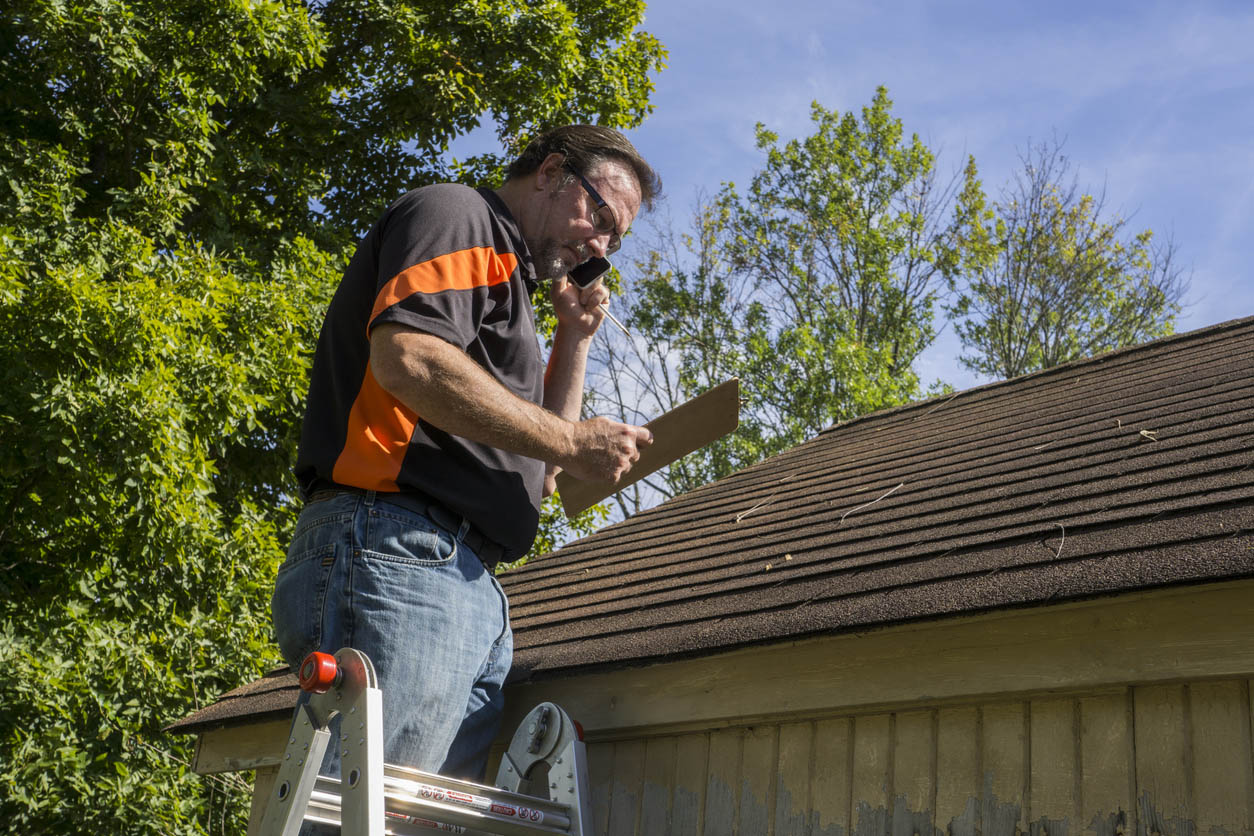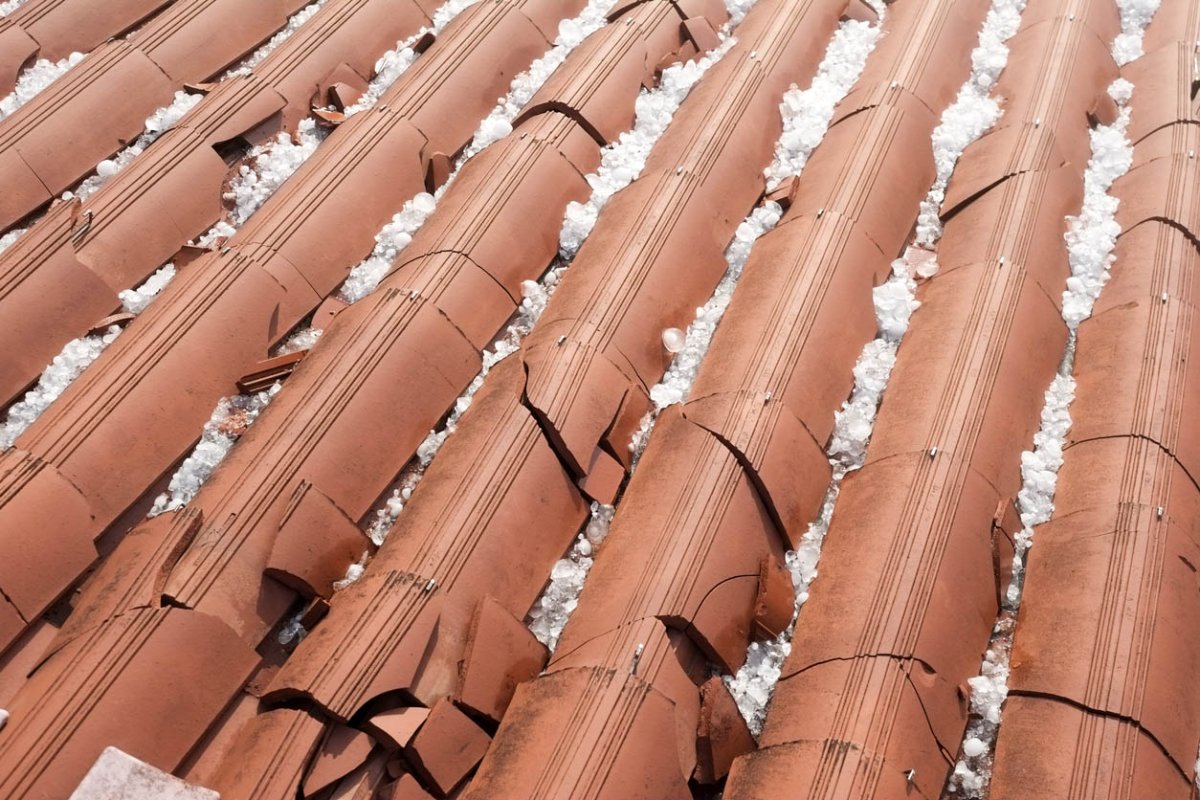We may earn revenue from the products available on this page and participate in affiliate programs. Learn More ›
If you live in an area that experiences heavy storms, your roof may be more susceptible to hail damage. Hailstones can crack shingles, which could potentially result in water damage to the home. Though some materials are more hail-resistant than others—for example, normal-size hail will not dent a metal roof—extremely large hailstones can wreak havoc.
Besides checking the daily hail reports, homeowners can minimize the impact of the damage by assessing and making necessary hail damage repairs promptly. Here’s what to know about identifying and repairing roof damage from hail storms.
Time required: 1 to 5 days
Difficulty: Intermediate
Estimated cost: Hail damage repair costs range from $4,000 to 5,000 for an average-sized roof requiring partial or full replacement, to $20,000 for a large roof that requires complete replacement.
Tools & Materials
Bobvila.com may earn a commission from purchases made through these links.
BEFORE YOU BEGIN

Once a hail storm stops, the first step for any homeowner is to identify the location and extent of any damage. Familiarizing yourself with the signs of hail damage can help you determine whether the damage warrants professional inspection and repair.
Keep in mind that the duration and cost of repairs will vary greatly depending on the extent of the damage. Additionally, roofers will not be able to make repairs during inclement weather.
Tips for Identifying and Repairing Hail Damage to Roof
- Even the smallest hail (¾ inch) can cause damage to a roof depending on wind speeds, though it is not always perceptible to the untrained eye. When hail reaches 1 inch or larger, more significant shingle bruising and damage are visible. Hail larger than 2 inches, especially when paired with high wind speeds, often causes severe damage.
- While a few loose granules on a shingle may not seem like a big deal, this indicates that the integrity of the shingle has been compromised. Over time, a water leak can develop, leading to more significant issues like mold growth or structural damage.
Safety Considerations
- When working on a roof, use scaffolding or a platform so you can safely walk across uneven surfaces. Wear sturdy, soft-soled shoes or roofing boots.
- If you do not have experience repairing roofs, call a professional to inspect and complete the necessary repairs.
Imitation Hail Damage
Before making any roof repairs, it’s crucial to accurately identify the source of the damage to take the best course of action. Other types of roof damage that may mimic hail damage include blistering and cracking from UV degradation or inclement weather, scuffing damage from shingle installation, wind and debris defacement, and worn-out shingles.
STEP 1: Inspect gutters and downspouts for hail damage. Siding and window frames may also show signs of damage.
Signs of hail damage are not limited to the roof itself; the surrounding areas may also show signs of damage. If a roof has experienced a significant hail storm, gutters and downspouts will often have dents from impact. Inspect siding, window frames, and any exposed metal surfaces (including outdoor air conditioner units), even for minor dings. Decks and other painted surfaces may show chipped paint or other signs of impact.

STEP 2: If your roof is easily accessible, look for signs of damage, including loose granules or cracks.
Some common signs of hail damage to roofs include loose granules that may expose the roof felt, cracks in the roof, and random damage with no discernable color. Inspect any roof vents, chimneys, skylights, and other features—as well as the shingles—for dents or chips. Using light-colored chalk on dark or hard-to-see surfaces can help reveal otherwise unseen damage.
Specific signs of hail damage will also vary by material. For asphalt and composition shingles, homeowners may see “hail hits” that are black and soft to the touch, as well as a shiny appearance on asphalt or its mat. Wood shingle hail damage can often be identified by brown or orange splits with sharp corners and edges.
STEP 3: Get a professional roof inspection to determine the extent of the damage.
Once you have performed an initial review of your roof, the next step is to get a professional roof inspection to determine the extent of the damage. Most professional inspections are free, and a roofer or general contractor should be able to identify the damage severity and what repairs are needed quickly.
STEP 4: If you have a shingled roof, identify if individual shingles need to be replaced or an entire area needs to be repaired.
For shingled roofs, homeowners can opt to replace individual shingles or repair an entire area. If only a handful of shingles are damaged, these can be removed and replaced with new shingles. This can be an ideal solution if you have a relatively new roof that does not need to be replaced entirely—though you will want to ensure that your new shingles closely match the old roof.
For more significant damage that is still contained to one area of the roof, partial reroofing is also an option. This will not only cost less than repairing the entire roof, but the new and old shingles will blend more easily. However, partial reroofing jobs can also result in increased labor and disposal costs and the possibility of uneven roofing at the ridges. If most or all shingles are damaged, it may be wise to replace the whole roof.

STEP 5: Contact your insurance company to see if hail roof damage is covered.
Insurance companies will cover significant repairs related to weather damage within six months to a year in many cases. Claims from naturally occurring incidents beyond a homeowner’s control (often referred to as “Acts of God”) cannot legally result in cancellation, non-renewal, or an increase in premiums.
However, the extent of the damage will typically determine whether the hail roof damage is covered. Most homeowner policies contain a one to two percent deductible; the amount of the claim should be considerably more than the deductible for the claim to be covered.
STEP 6: File a claim and hire a professional to repair your roof.
After professional roof inspection and determining that hail roof damage is covered under your insurance policy, the final step is filing a claim and hiring a professional. The time it takes to complete repairs depends on the severity of the damage. However, most roofing repair jobs from hail storm damage can be completed between one to five days.
Hail storm damage can range from minor to severe, but all damage from hail should be taken seriously and addressed as soon as possible, ideally by an experienced professional. Homeowners who are familiar with the signs of hailstone damage can minimize its impact and ensure the health of their roof for years to come.


